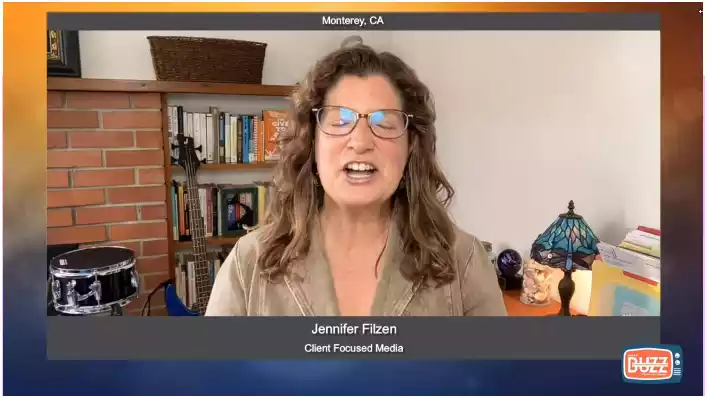Mastering the Prior Authorization Process: Keys to Operational Excellence
Mastering the prior authorization process can streamline approvals and improve patient care. Learn simple strategies to make it easier.

You might be wondering, what is the difference between a referral and a prior authorization? A referral is when your primary care doctor directs you to see a specialist or receive specific services, typically required by some insurance plans to ensure coordinated care. On the other hand, prior authorization is a separate process where your healthcare provider must get approval from your insurance company before a particular treatment, procedure, or medication is covered. While both are used to manage care, a referral is about directing care, whereas prior authorization ensures that the service is medically necessary and covered by insurance.
Let’s get into the details!
Table of Contents
Understanding Prior Authorization Procedures

Understanding Prior Authorization
Prior authorization requires a healthcare provider to obtain approval from a payer, typically an insurance company, before rendering specific services or prescriptions. This step verifies that the treatment or medication is covered under the patient’s insurance plan and meets specific clinical criteria.
The Purpose of Prior Authorization
- Cost Control: Insurance companies use prior authorization to manage costs by ensuring that more expensive treatments are medically necessary and suitable alternatives have been considered.
- Clinical Necessity: It aims to ensure that the prescribed treatments are appropriate for the patient’s medical condition based on evidence-based guidelines.
- Preventing Fraud and Abuse: Prior authorization helps to detect and prevent fraudulent claims, reducing the risk of abuse within the healthcare system.
Steps in the Prior Authorization Process
The prior authorization process typically follows these steps:
- Submission: The healthcare provider submits a prior authorization request to the insurance company.
- Review: The insurance company reviews the request, often requiring additional documentation or clinical information.
- Approval or Denial: The insurer approves the request, allowing the provider to proceed or denies it, usually with an explanation.
- Appeals: Providers can appeal the decision if denied, providing further justification for the treatment.
Challenges in the Prior Authorization Process
Administrative Burden
Handling prior authorizations can be immensely administrative. Healthcare providers often need to dedicate significant staff time to filling out paperwork, responding to requests for additional information, and following up on submissions. This can divert resources from patient care and increase operational costs.
Delays in Patient Care
Delays in the prior authorization process can lead to treatment postponements, negatively impacting patient outcomes. Patients may experience prolonged suffering or worsening conditions if necessary treatments are delayed.
Lack of Standardization
The lack of standardization in prior authorization requirements across different payers adds complexity. Each insurer may have unique forms, criteria, and procedures, making it challenging for providers to maintain compliance and efficiency.
Strategies for Mastering the Prior Authorization Process

Various technology solutions can still greatly enhance the prior authorization process.
- Electronic Prior Authorization (ePA): Adopting ePA systems can streamline submissions, reduce paperwork, and speed up approvals. These systems integrate with electronic health records (EHRs), automatically collecting patient information and seamless communication with insurers.
- Centralized Portals: Payer-provided centralized portals can provide a single access point for managing multiple prior authorizations, tracking submission status, and receiving real-time updates.
Staff Training and Development
Investing in staff training can improve the efficiency and effectiveness of the prior authorization process. Training programs should cover the following areas:
- Understanding Payer Requirements: Staff should be well-versed in different insurers’ specific requirements and procedures.
- Clinical Documentation: Proper training in clinical documentation ensures that all necessary information is included in the initial submission, reducing the likelihood of denials.
- Communication Skills: Developing strong communication skills helps staff interact effectively with patients and insurers, facilitating smoother processes and faster resolutions.
Process Standardization and Optimization
Creating standardized workflows and processes can mitigate the challenges of varying payer requirements and improve operational efficiency.
- Standard Templates: Developing standard templates for common prior authorization requests can ensure that all necessary information is consistently included, reducing the risk of denials.
- Checklist Approach: Using checklists can help staff ensure all required documentation and information is submitted initially, minimizing back-and-forth with insurers.
- Tracking and Monitoring: Implementing systems to track and monitor the status of prior authorization requests can help identify bottlenecks and areas for improvement. Regular audits and reviews of the process can lead to continuous optimization.
I'm very thankful for Portiva who I know is looking after my practice while I'm gone the virtual assistants can manage prescription refills, documents they can triage patients and just kind of answer administrative questions and they can handle a lot on their own. But also, they're very good about contacting me if there's any emergency or anything I need to attend to. So I'm very thankful for Portiva they can help almost any provider almost anywhere and it really allows for some good work-life balance as I'm getting to experience right now at my family farm so I'm very thankful for Portiva and I'm very happy to use their services"

Board Certified Family Medicine Physician

Portiva's Virtual Medical Assistant - I have all the support I need. There's somebody checking my email, any patient messages. Patients are still able to schedule and handle any scheduling issues and any kind of billing that needs to still go through. Portiva hands handles it all for me. I have support i have somebody that I can access 24/7 pretty much. It's all very seamless. If somebody has an emergency or needs a medication called in. I know that the va's at portiva will handle that for me.

Board Certified Family Medicine Physician

Effective Communication

- Patient Education: Educating patients about the prior authorization process and their role can help manage expectations and reduce frustration. Providing clear instructions on submitting required information can speed up the process.
- Insurer Relations: Building solid relationships with insurance companies can facilitate smoother communication. Establishing points of contact within payer organizations can help resolve issues quickly and efficiently.
Advocacy and Collaboration
Advocating for policy changes and collaborating with industry stakeholders can drive improvements in the prior authorization process on a broader scale.
- Policy Advocacy: Working with professional associations and regulatory bodies to advocate for policy changes that standardize and simplify prior authorization requirements can benefit the entire healthcare system.
- Collaborative Initiatives: Participating in cooperative initiatives and working groups with other healthcare providers, insurers, and technology vendors can lead to the development of best practices and innovative solutions.
Utilizing Data and Analytics
Using analytics and data can yield insightful findings into the prior authorization process and identify opportunities for improvement.
- Performance Metrics: Monitoring essential performance indicators, such as approval rates, turnaround times, and denial rates, can help identify trends and areas needing attention.
- Benchmarking: Comparing performance against industry benchmarks can highlight areas for improvement and inform goal-setting and strategic planning.
- Root Cause Analysis: Conducting root cause analysis of denials can provide insights into everyday issues and guide process improvements.
Conclusion
Mastering the prior authorization process is essential for healthcare providers aiming to achieve operational excellence. By understanding the complexities and challenges and implementing strategies such as adopting technology solutions, standardizing processes, enhancing staff training, fostering effective communication, advocating for policy changes, and leveraging data analytics, providers can streamline the process, reduce administrative burdens, and improve patient care. Through continuous improvement and collaboration, healthcare providers can navigate prior authorization’s intricacies, ultimately enhancing operational efficiency and patient outcomes.
To learn more about medical pre-approval that can enhance your medical practice. Discover more about Portiva and unlock a world of possibilities by visiting our homepage today!
- Prior authorization unveiled
- Practices for streamlining prior authorization
- Roadmap to understanding prior authorization
- Advocating patient safety with precertification services
- Outsourcing for prior authorization success
- Patient access and prior authorization
- Prior authorization costs impact healthcare access
- Making prior authorization more efficient
- Fair prior authorization practices
- Engaging patients in prior authorization
- Streamlining prior authorization procedures
- Providers vs. payers in prior authorization
- Mastering prior authorization
- Comprehensive prior authorization training
- Optimize prior authorization journey
- Providers and payers in prior authorization
- Operational excellence in prior authorization
- Demystifying prior authorization
- Complex world of prior authorization

